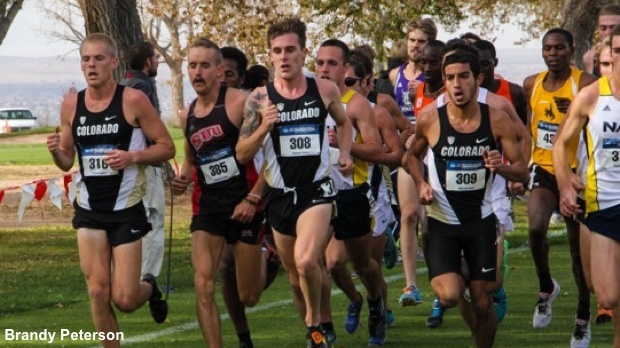Regional Parity: The Variable Nature of the NCAA
Regional Parity: The Variable Nature of the NCAA


By: Scott Olberding @isthatsol
It’s a very special time of year for cross country runners and fans alike. The air is crisp, the holidays are approaching, and the occasional winter storm will soon be wrecking havoc from Boise to Burlington. We have also just experienced the advent of NCAA Division I Cross Country Regionals, a day filled with extremely high energy and equally low work productivity. It’s a special time because anything can happen – every team has the discrete chance of making the national meet, albeit some teams are better prepared (read: faster) than others. And who could forget about the straightforward team qualifying criteria? 31 teams comprised of the top two teams from each of the 9 Regions, with the remaining 13 next-best teams added via a simple, easy to follow process, as follows: The NCAA reviews regular-season competition and awards “points” to a team that has finished outside of the top-2 in their Region for all the teams they beat that finished top-2 in any Region. There is an added caveat, though, the team you beat needs to be an “A” team, meaning that on the day you beat them, the team needed to be racing the majority of the team that they also raced at Regionals. Also, only competitions between September 26 and the Regional meet weekend are included in the analysis. See? Simple.

This system was developed to allow teams from a stronger Region to advance to Nationals without meeting the auto-qualifying criteria, because as we know from watching the races this past weekend, not all Regions are created equal. To showcase this, here are two graphics outlining performance at the National meet from 2009-2013 for the top-2 teams at each Region for men and women, respectively:




Examining this data, a few trends emerge. For the most part, there is more parity in the men’s race than in women’s race, meaning that the spread between best and worst performances for this five-year period is higher for the men’s race than the women’s. In fact, the average difference for between best finish and worst finish for all Regions is 17 for men, while it is 14 for women.
We are also able to see which Regions typically perform better than others. Historically, the men’s Midwest (1st qualifier), Mountain (2nd qualifier), and West (2nd qualifier) Regional qualifiers have done very well at Nationals, with none of these teams finishing in the bottom half of the championship race. The women’s teams that meet the same criteria are those from the Mid-Atlantic (2nd), Midwest (1st), Mountain (2nd), and South (1st).
This analysis also raises an interesting point – there are multiple instances (over the past five years) where, on average, the second place team in a given Region ultimately outperforms the first place Regional team at Nationals. The Regions that meet this criterion (for men) are Mid-Atlantic, Mountain, Northeast, Southeast, and West. The women’s Regions showing the same quizzical pattern are Mid-Atlantic and Mountain. I would not suggest that in these Regions it is better to get second heading into Nationals, per se, but rather that cross country is a pretty unpredictable sport and that a lot can happen week-to-week.
On the other hand, there are several rather predictable elements about qualifying for Nationals. Specifically, there are certain teams that been very consistent over the past six years. The following table shows the number of unique teams that comprise the top two positions for each Region from 2009 – 2014.


This graphic outlines an interesting idea – while we discovered earlier that there is a higher degree of variation in finish place for the men’s race at Nationals (compared to the women’s race), there are a fewer number of unique teams that take home the top two spots in a given Region when juxtaposed against the women’s Regional races. Matthew McConaughey’s character in True Detective, Rust Cohle, accurately summarized the men’s Midwest, South Central, and West Regions when he pondered the nature of Eternal Return, quipping, “Time is a flat circle. Everything we've ever done or will do, we're gonna do over and over and over again.” Oklahoma State, Oklahoma, Tulsa, Arkansas, Texas, Texas A&M, Stanford, Portland, and Oregon have very consistently made up the top of their respective Regions, and it looks like that won’t be changing in the near future.
As an aside, one of the most staggering cross country facts that I have stumbled upon in my research showcases the longevity of the University of Wisconsin men’s team legacy: they have qualified for the National Championship a record forty-three consecutive years, starting in 1972. This was the year the Regional format was introduced. Wisconsin’s head coach, Mick Byrne, was 18 years old when the streak started.
Based on the information presented, it is safe to say that, unequivocally, all NCAA Cross Country Regions are not created equally. With that being said, there is also an extremely high level of variability in performance of the top-two teams from each Region when competing at the National Championships. This further supports the thesis that foot racing, by nature, is relatively unpredictable, especially in the context of team scoring. This all boils down to very exciting team battles this Saturday at Indiana State.
Scott's Previous Work:
Will Colorado Repeat?
Unsung Heroes: 3rd, 4th, 5th Runners
120 Mintues Over 26.2 Miles